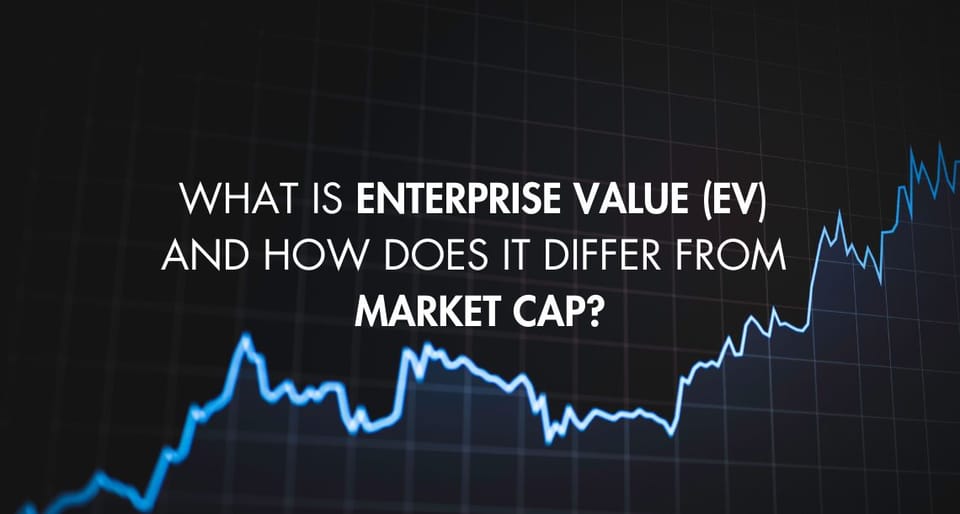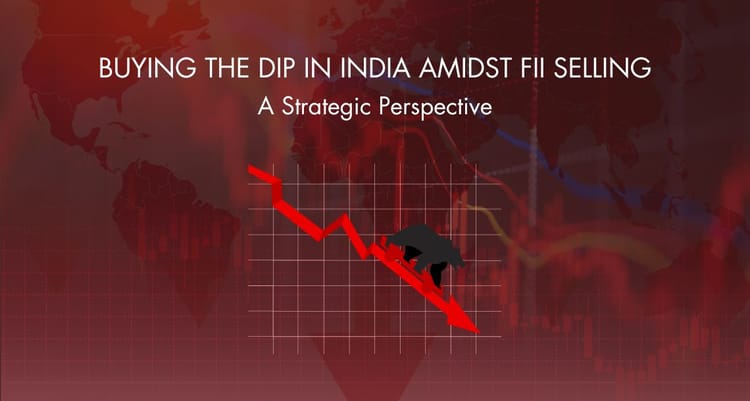What is Enterprise Value (EV) and How Does it Differ from Market Cap?

If you are diving into the world of finance or investing, you might have come across two important terms: Enterprise Value (EV) and Market Capitalization (Market Cap). These two metrics are crucial when evaluating a company’s value, but they are used in slightly different contexts and give different insights into the company’s financial health and market position.
Enterprise Value (EV) is a comprehensive measure of a company's total value. It represents the cost of acquiring the entire business, including not just its equity but also its debt and excluding its cash and cash equivalents. EV is often used in financial analysis and valuation, particularly in mergers and acquisitions (M&A), because it gives a clearer picture of the company's true value as an operating business.
Formula for EV:
EV= Market Cap+Total Debt−Cash and Cash Equivalents
Where:
- Market Cap is the value of the company's outstanding shares of stock.
- Total Debt includes both short-term and long-term debt.
- Cash and Cash Equivalents are highly liquid assets that can be quickly converted into cash.
EV takes into account all sources of capital that are used to finance the company’s operations, whether through equity or debt, and adjusts for the company's cash reserves.
What is Market Capitalization (Market Cap)?
Market capitalization (Market Cap) is a simpler measure of a company's value, representing the total market value of a company’s outstanding shares of stock. It’s a commonly used metric for assessing the size of a company.
Formula for Market Cap:
Market Cap= Stock Price×Shares Outstanding
Market Cap focuses exclusively on the equity portion of the company, and it does not account for debt or cash reserves.
Key Differences Between Market Cap and Enterprise Value
Let’s compare the two metrics side by side:
| Factor | Market Cap | Enterprise Value (EV) |
|---|---|---|
| What It Measures | Total value of a company’s equity (stocks). | Total value of a company including debt, excluding cash. |
| Formula | Stock Price × Shares Outstanding | Market Cap + Total Debt - Cash |
| Debt Consideration | Does not include debt. | Includes debt as it is part of the company’s liabilities. |
| Cash Consideration | Does not include cash. | Subtracts cash because it can be used to pay off debt or as liquidity. |
| Usefulness | Best for understanding the value of a company’s shares. | Best for understanding the total value of the company, especially in M&As (Mergers & Acquisitions). |
Let’s Look at an Example
Suppose we have a company, XYZ Ltd., with the following financial details:
- Stock Price: ₹100
- Shares Outstanding: 1 crore (10 million shares)
- Debt: ₹200 crore
- Cash and Cash Equivalents: ₹50 crore
- Market Capitalization:
Market Cap=100×1,000,000=₹100,000,000 (₹100 crore)
- Enterprise Value (EV):
EV=Market Cap+Debt−Cash
EV=₹100crore+₹200crore−₹50crore=₹250crore
So, while the Market Cap is ₹100 crore, the Enterprise Value is ₹250 crore. This difference shows that the company has ₹200 crore in debt that an acquirer would need to take on, but also has ₹50 crore in cash that could be used to pay down part of that debt.
Why is Enterprise Value (EV) More Accurate in Some Cases?
EV is a better measure of a company’s true value, especially in cases like Mergers & Acquisitions (M&A). Here’s why:
- Debt is important: If a company has a large amount of debt, an investor or acquirer needs to consider that debt as part of the overall cost of acquiring the business. EV accounts for this.
- Cash matters: On the flip side, if a company holds a lot of cash, it can use that to pay off debt or finance new investments. EV subtracts cash because it effectively reduces the buyer's financial burden in an acquisition.
- Capital Structure: Companies with high debt might have a low market cap but a high EV, reflecting that the market values the company’s equity lower, but it has significant liabilities that impact its total value.
Which Metric Should You Use?
- For Investors: If you are looking to buy shares of a company and care mostly about the value of the company’s stock, Market Cap is the metric to focus on. It’s simpler and gives you a quick sense of the company’s market value.
- For Acquirers or Analysts: If you are assessing a company from an acquisition perspective or trying to value it in a more comprehensive way, Enterprise Value (EV) is a better metric. It helps you understand the total value, including debts and cash reserves, which is important in understanding the cost of buying the business.
So both Market Cap and Enterprise Value (EV) are key metrics for understanding a company’s value, but they serve different purposes. Market Cap is a measure of the value of a company’s equity based on its stock price, while EV provides a fuller picture by accounting for both debt and cash. For a clear understanding of a company’s value from an acquisition standpoint, EV is the more useful measure, as it reflects the total cost of owning the company, including taking on its debt and receiving its cash reserves.
Now that you know how EV and Market Cap differ, you can better analyze a company’s financial health and its position in the market!






Member discussion